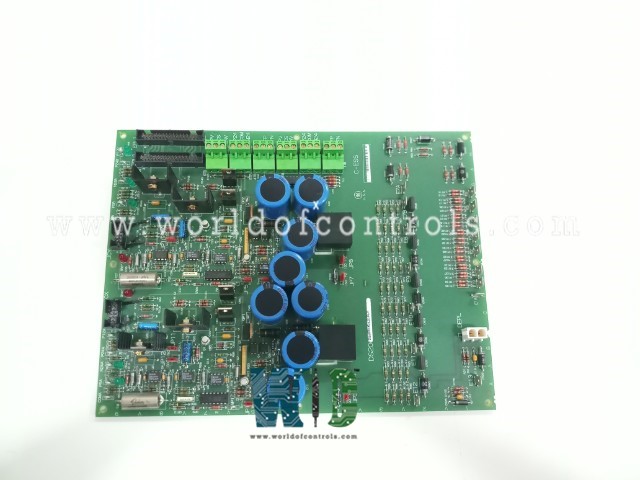
World Of Controls understands the criticality of your requirement and works towards reducing the lead time as much as possible.
DS200EXDEG1ABA - De-Excitation Control Board is available in stock which ships the same day.
DS200EXDEG1ABA - De-Excitation Control Board comes in UNUSED as well as REBUILT condition.
To avail our best deals for DS200EXDEG1ABA - De-Excitation Control Board, contact us and we will get back to you within 24 hours.
Part No.: DS200EXDEG1ABA
Manufacturer: General Electric
Country of Manufacture: United States of America (USA)
PCB Coating: Conformal
Technology: Surface-mount
Temperature Operating: -30 to 65oC
Product Type: De-Excitation Control Board
Availability: In Stock
Series: EX2000
DS200EXDEG1ABA is an De-Excitation Control Board developed by GE. It is a part of EX2000 excitation system. The primary function of the De-Excitation Module is to dissipate energy from the generator field during normal or emergency shutdowns. When such shutdown events occur, the module plays a critical role in controlling and limiting the voltage across the generator field. This is achieved by effectively managing the field breaker or contactors, ensuring that energy dissipation is regulated and controlled within safe parameters.Comprising several key elements, including the EXDE board itself, a Conduction Sensor board, a steel core designed to concentrate flux for the conduction sensors, and additional components such as a 53 mm or 77 mm SCR, the module is further supported by a sheet metal base for secure mounting of these devices.
The WOC team is always available to help you with your EX2000 requirements. For more information, please contact WOC.
What is DS200EXDEG1ABA?
It is a de-excitation control board developed by GE under the EX2000 series.
What are testpoints, and why are they important on the board?
Testpoints are designated locations on the board where specific signals or voltages can be measured or checked. They are essential for troubleshooting, diagnostics, and verifying the proper functioning of the board's components and circuits.
How many testpoints are available on the board, and what signals can be checked using them?
The board features ten testpoints, allowing for the checking of various signals and voltage levels. These include the master pulse signal, gate pulse signals for control circuits 1 and 2, as well as positive 5, 12, and 24 V DC for both control circuits.
Why would someone need to check the master pulse signal on the board?
The master pulse signal is a critical aspect of the board's operation, responsible for coordinating and synchronizing the firing of the SCR and other control functions. Checking this signal ensures that it is being generated correctly and is synchronized with the system's requirements.